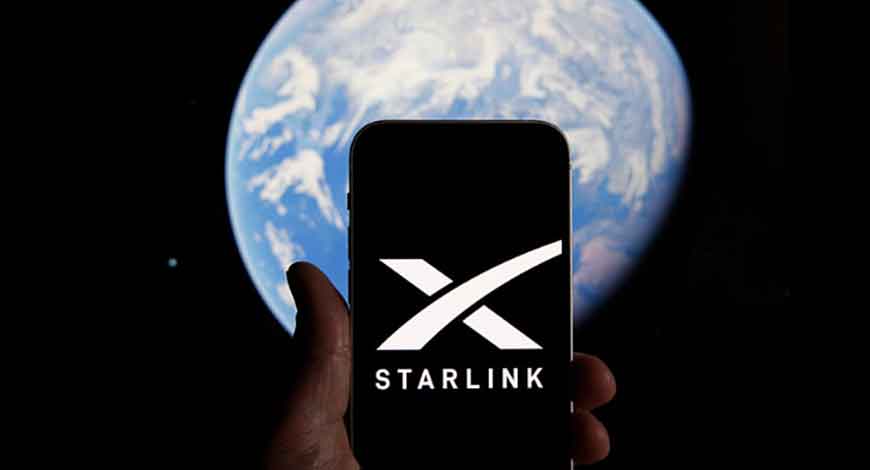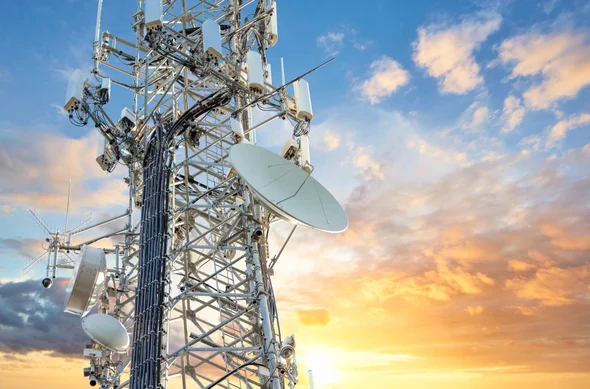SpaceX has successfully completed multiple Falcon launches in 2023. Led by Elon Musk, the company (literally) launched its new project in the new year. The initial set of Starlink internet satellites was propelled aboard the Falcon 9 spacecraft on January 2, 2024, at 10:44 p.m. EST. These satellites aim to offer Direct To Cell capabilities, allowing the possibility of accessing satellite broadband directly on smartphones.
The six @Starlink satellites on this mission with Direct to Cell capability will further global connectivity and help to eliminate dead zones → https://t.co/FgiJ7LOYdK pic.twitter.com/zFy7SrpsYs
— SpaceX (@SpaceX) January 3, 2024
This innovation is expected to address geographical challenges that typically hinder the provision of Internet services. 21 Starlink satellites were launched into low-Earth orbit from Space Launch Complex 4 East (SLC-4E) at the Vandenberg Space Force Base in California. As part of the launch, the first stage of the Falcon 9 returned to Earth just 8.5 minutes after takeoff and safely landed on the ‘Of Course I Still Love You‘ droneship in the Pacific Ocean.
Falcon 9’s first stage has landed on the Of Course I Still Love You droneship pic.twitter.com/Gatio1u7qi
— SpaceX (@SpaceX) January 3, 2024
The official Starlink website states, “This launch will include the first six Starlink satellites with Direct to Cell capabilities that will enable mobile network operators around the world to provide seamless global access to texting, calling, and browsing wherever you may be on land, lakes, or coastal waters.” Starlink’s objective is to create a satellite internet network covering the entire Earth. Presently, over 5100 active satellites have been launched, and the number continues to increase with each subsequent launch.
Falcon 9 launches 21 @Starlink satellites to orbit from California, including six with Direct to Cell capabilities → https://t.co/FgiJ7LOYdK pic.twitter.com/IKBkTSB63C
— SpaceX (@SpaceX) January 3, 2024
Also Read: As Grok Enters The Indian Market, Listing What We Like And Dislike About The Latest Innovation
How It Works
Starlink satellites with Direct to Cell capability have an advanced eNodeB modem onboard that acts like a cellphone tower in space. It allows network integration similar to a standard roaming partner. Additionally, Starlink will have to partner with mobile network operators (MNOs) to integrate their services into existing cellular networks.
In practical terms, having the Starlink service on their smartphones will enable smartphone users to enjoy connectivity regardless of their location. If your telecommunications provider has secured access to the Starlink service, it will be compatible with your existing mobile phone. This service holds particular significance for regions where reliable internet connectivity is limited or entirely absent.
Additionally, this system can be set up in a jiffy, making it super handy in emergencies when regular infrastructure might not be available as well as during disasters. The Starlink service can offer vital access to essential resources in such situations.

While this may have been done in some countries, there are reports about the service being launched in India as well. Recently, Vodafone Idea clarified that it is not in talks to tie up with Musk’s satellite internet company. Meanwhile, a separate report claimed that Reliance Jio may soon receive regulatory approval for launching satellite internet services in India.
The Limitations
“The six Starlink satellites on this mission with Direct to Cell capability will further global connectivity and help to eliminate dead zones,” SpaceX said in a post. “This will allow for mobile phone connectivity anywhere on Earth,” Musk added. While the launch of Starlink satellites is a giant leap in the direction of satellite-based internet globally, it comes with a limitation.
Musk provided additional information that may dash hopes of people talking about getting internet connectivity irrespective of where they are. “Note, this only supports ~7Mb per beam and the beams are very big, so while this is a great solution for locations with no cellular connectivity, it is not meaningfully competitive with existing terrestrial cellular networks,” he added.

Starlink’s Internet Not For Everyone?
The one thing that’s clear from Musk’s post is that the satellites aim to provide internet in areas that have no connectivity. Similar to what Apple is offering with iPhones. The Starlink satellites are aimed to provide “access to text, voice, and data for LTE phones across the globe”.
Starting this year, they’re rolling out text support, but it means those who want to use it will have to hang tight for a bit. As for Direct to Cell, the connectivity of IoT devices using common LTE standards is in the pipeline for another year – SpaceX is looking to kick off support by 2025. The six satellites were a part of the 21 Starlink satellites that were launched. SpaceX plans to launch approximately 840 direct-to-mobile phone satellites over the next 6 months.

“7Mbps speed” is a lot less when compared with what telecom operators in several countries offer. For example, as per Ookla’s report, the UAE offers an average internet speed of 324.92Mbps. In India, the average mobile data speed is 94.62Mbps. With several devices connected to one 7Mbps beam, there will likely be a negative impact on the speed of the internet in each device. We may see a speed bump in future.


